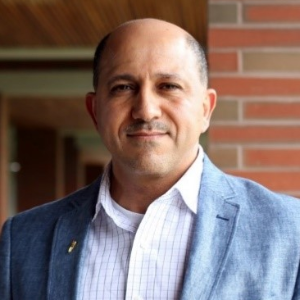Molecular Sensors (Chemosensors)
Molecular Sensors (Chemosensors) Are Analytical Devices Designed To Detect And Measure The Presence Of Molecular Species In Various Environmental Samples. These Sensors Exploit Various Physical And Biochemical Properties Of Molecules To Identify And Quantitatively Assess Their Presence. Some Of The Most Commonly Used Sensing Principles Include Surface Acoustic Wave (SAW), Quartz Crystal Microbalance (QCM), Surface Plasmon Resonance (SPR), Surface Enhanced Raman Spectroscopy (SERS), And Electrochemical Techniques. Chemosensors Have Become Increasingly Popular Due To Their High Sensitivity And Selectivity, As Well As Their Ability To Detect Molecules At Parts-Per-Million And Even Parts-Per-Billion Concentrations. They Have Been Used In A Wide Range Of Applications, Including Environmental Monitoring, Food Safety Analysis, And Medical Diagnostics. In Environmental Sensing, Chemosensors Can Give Rapid Detection Of Pollutants And Other Environmental Toxins. They Can Detect And Quantify Levels Of Volatile Organic Compounds (VOC), Polycyclic Aromatic Hydrocarbons (PAH), Heavy Metals, And More Through The Use Of Colorimetric, Fluorescence, Or Electrochemical Sensors. These Sensors Have Good Sensitivity, Even At Very Low Concentration Levels. In Addition, They Can Be Used In Remote Sensing Applications For Real-Time Monitoring Of Environmental Parameters. In Food Safety Applications, Chemosensors Are Used To Identify A Variety Of Bioactive Compounds, Such As Mycotoxins, Pesticides, Contaminants, And Vitamins. They Have Also Been Used To Detect Spoilage Related Substances In Food. In Medical Diagnostics, They Help Detect Various Disease Markers And Metabolites In Biological Samples. Overall, Chemosensors Have Become Invaluable Tools In A Wide Variety Of Applications Due To Their High Sensitivity, Selectivity, And Portability. Their Development And Use Are Expected To Grow In The Future.

Hossam A Gabbar
Ontario Tech University, Canada
Victor John Law
University College Dublin, Ireland
Alexander Bagaturyants
National Research Nuclear University MEPhI, Russian Federation
Sergey Suchkov
N.D. Zelinskii Institute for Organic Chemistry of the Russian Academy of Sciences, Russian Federation
Shree Niwas Chaturvedi
Centre for Aptitude Analysis and Talent Search, India
Pieter Samyn
SIRRIS, Belgium




Title : Advances in plasma-based radioactive waste treatment
Hossam A Gabbar, Ontario Tech University, Canada
Title : Unraveling the ultrastructure and functions of the neuronal membrane skeleton using super-resolution fluorescence microscopy
Zhou Ruobo, Djillali Liabes University of Sidi Bel Abbes, Algeria
Title : Solar box cooker dehydration, and relative humidity endpoint detection, of lamiaceae culinary leaves on the island of Crete
Victor John Law, University College Dublin, Ireland
Title : Nutrient and heavy metal loads from the Ribeiras to Coastal zones: A land-ocean continuum perspective in Madeira Island
Aracelis Del Carmen Narayan Rajnauth, University of Porto, Portugal
Title : Prospective polyoxometalate-based covalent organic framework heterogeneous catalysts
Arash Ebrahimi, Comenius University Bratislava, Slovenia
Title : Eliminating implant failure in humans with nano chemistry: 30,000 cases and counting
Thomas J Webster, Brown University, United States